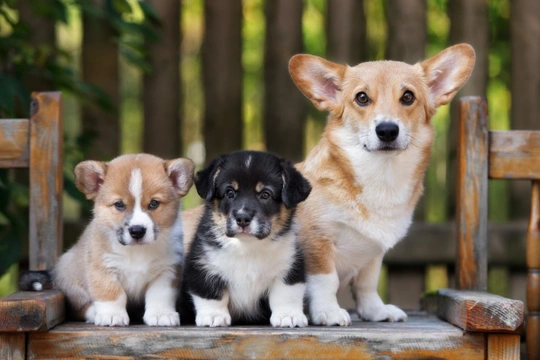
Why might a puppy look very dissimilar to its parents or littermates?
There can be quite a lot of variation in terms of the appearances of dogs that are closely related, even in the case of two pups from within the same litter. However, when two pedigree dogs of the same breed are mated, the appearance of every dog within the litter should fall within the breed norms and of course, pups will often look very like their littermates to the point that it can be hard to tell them apart!
When it comes to non-pedigree dogs, mixed breeds and deliberate crossings of two breeds or the subsequent offspring of mixed crossings-like the Labradoodle and Cockapoo- there is a lot more scope for variance, to the point that the colour or other manifestations of physical appearance can be quite variable within the same litter.
In this article, we will examine some of the various factors that can lead to different pups within the same litter looking very dissimilar to their parents and/or littermates, and how this might occur. Read on to learn more.
Colour genes
Different pups from within the same litter may be different colours, and the colour that any given pup turns out to be will depend on the combination of colour genes that they inherit from both parents. However, this does not necessarily mean that the colour of the pups will depend on the colour of the parents-dogs can carry various colour genes that may be expressed or masked in their offspring depending on the colour genes that the other parent dog brings to the table.
A dog of a certain colour may be a carrier of the genes for other colours too-and if the dog they are mated with does not carry the masking genes for those carrier colours, the litter, or some of the pups, may be a different colour! This holds true for breeds for whom more than one colour variant is possible, and for dogs whose parent breeds are mixed.
Changes with age
The appearance of a puppy at birth and during their early stages of life will not necessarily be the same as their adult appearance. For instance, Dalmatian puppies are born pure white, and only develop their spots as they get older.
Dog breed with corded coats like the Komondor are not born with their coats in cords, and these only develop over time as the coat gets longer and begins to form into dreadlocks. Some dog breeds which have pointed, erect ears will produce litters with ears that may be folded over when young, and that only begin to stand upright as the dog grows and develops.
Additionally, some breeds of dog have a puppy coat of fur that is rather different in length, appearance and texture to the adult version, which can take some time to develop.
Mixed breeds
Deliberate crossings of two unrelated breeds to produce hybrids like the Labradoodle and Cockerpoo produce litters that possess a combination of various different physical and behavioural traits from both parent breeds. Exactly which combination of traits each puppy inherits can be variable, and goes deeper than simply colour.
The coat length, texture and other qualities can vary-for instance, some Labradoodles will have a very poodle-like coat, which is curly and does not shed, while others from the same litter could have a coat more like the smooth, short appearance of the Labrador, and others may fall somewhere in between.
When crossing two unrelated breeds or crossing their subsequent offspring, the chances of a member of the litter displaying a physical trait that can be found in one of the two originating breeds but that is not displayed in either of the parent dogs themselves is reasonably high.
Mis-mating
Ensuring that a bitch in season breeds only with the sire of your choice requires a lot of management and vigilance, and mis-mating accidents can happen quickly and easily. Mis-mating occurs when the bitch mates with any dog other than the one you had planned, or perhaps you had not planned to mate her at all!
If you were not planning to mate your bitch and yet somehow she ends up pregnant, you may never know for sure what dog she mated with, and so, what the puppies might look like until they are born.
Additionally, even if you successfully mate the bitch with the dog of your choice, there is always a chance that unless you supervised her continually while in season, she had already mated or mated shortly afterwards with a different dog, producing puppies that may look nothing like you had expected!
Litters with different fathers
Bitches can actually have a litter of puppies that have two different sires, and while this is not massively common, it is still worth bearing in mind! Conception can occur hours or even days after successful mating, and this means that if the bitch has mated with two or more dogs, either one may potentially be the father-and in some cases, both dogs may be successful in fertilising the bitch, which may cause a litter to be born with two different sires, and different appearances to match!



